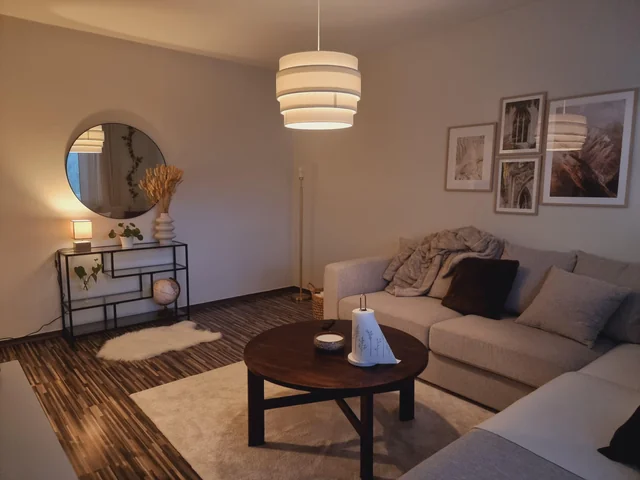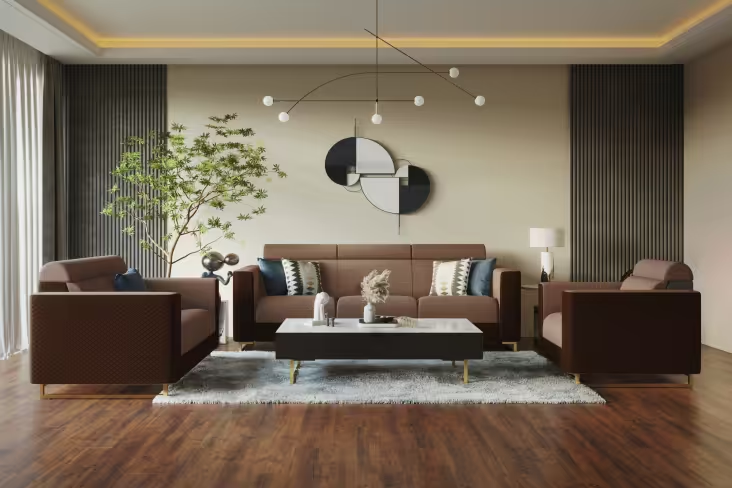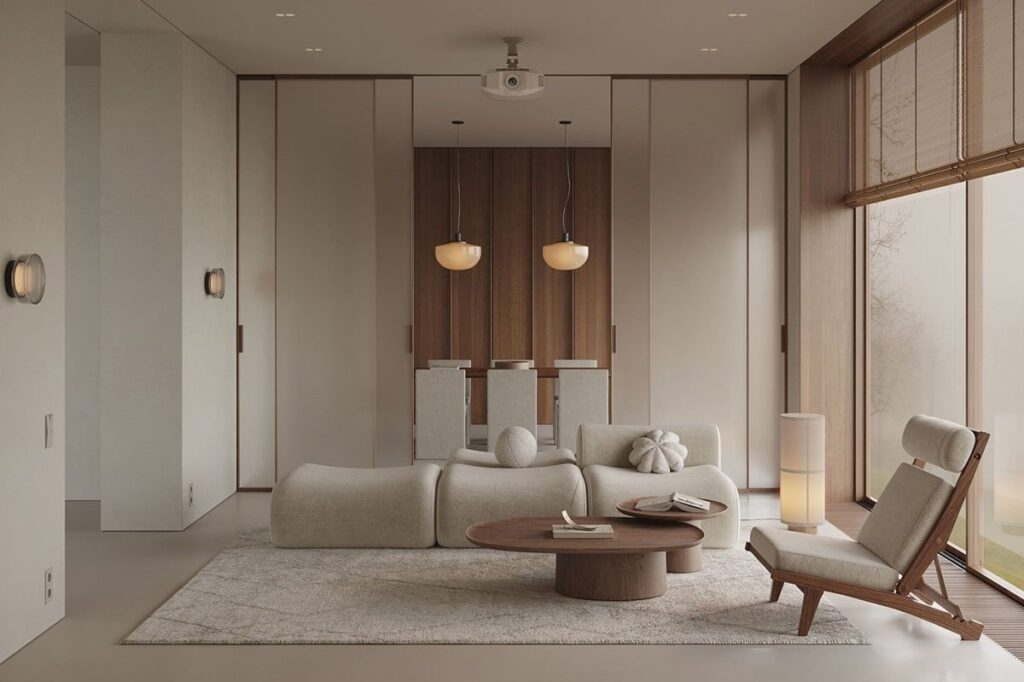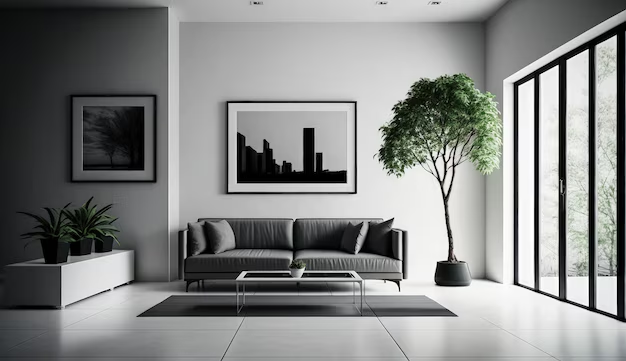Start with intentional decluttering sort belongings into keep, donate, and discard, focusing only on items that serve a purpose or bring you joy. Adopt a “one-in, one-out rule to maintain harmony and prevent new clutter from creeping in. Ground the space in a neutral base palette whites, beiges, and soft grays to create an airy, cohesive backdrop, then introduce subtle accent colors sparingly. Integrate texture and natural elements like wool rugs, linen curtains, wood furniture, or houseplants; these layers bring warmth and depth without overcrowding the room. Curate meaningful items a few pieces of art, travel mementos, or heirlooms to tell your personal story, rather than covering every surface. Use warm, layered lighting combining natural light, soft lamps, and dimmable fixtures to shape ambiance and avoid a stark, clinical vibe. Finally, embrace negative space intentionally: leaving empty zones gives visual breathing room and lends each chosen piece greater presence.
Minimalist Home Feels Empty? Here’s Why & How to Fix It
When your minimalist home feels empty, it usually isn’t a lack of space it’s a lack of warmth, texture, lighting, and personality. Start by adding layered textures think wool rugs, linen curtains, throws, and cushions to break up the emptiness and add depth. . Build in warm lighting using dimmable lamps and candles to soften the vibe and avoid harsh overhead lights. . Introduce natural elements like wood, plants, stone, or ceramics to ground the space and bring life in . Anchor the room with a focal point a large piece of art, a sleek coffee table, or a statement plant to draw the eye and create balance. . Add just a few personal touches a cherished photo, travel artifact, or heirloom so it feels lived-in instead of staged. Stick with a warm neutral palette accented by earthy hues like terracotta, olive, or mustard to keep the space serene yet inviting. . Finally, embrace negative space intentionally leave areas empty to let each thoughtful element shine and to preserve a calm, uncluttered feel. With these moves, your minimalist home becomes a cozy, intentional haven not an empty showroom.

Balancing Minimalism with Coziness: A Room-by-Room Approach
Approach each room by starting with a neutral, warm base palette think whites, beiges, and soft greys to create serenity and a cohesive flow throughout. . Anchor spaces with one or two statement elements: a large art piece in the living room, a textured rug in the bedroom, or a sculptural lamp in the kitchen, giving visual interest without clutter. . Layer natural textures wool rugs, linen curtains, wooden furniture, stone accents and add plants or organic materials to ground the minimalist backdrop and infuse life . Use layered lighting warm-toned table and floor lamps, dimmable fixtures, and candles to soften stark lines and cultivate a cozy atmosphere . Curate a few meaningful accessories artwork, heirlooms, ceramics in each room to reflect your personality and avoid that museum-like emptiness. . Maintain organized storage zones and apply a “one-in, one-out” rule so each element remains intentional and clutter stays at bay. Finally, embrace negative space leaving areas intentionally empty to give your carefully selected pieces room to breathe and shine.

Texture & Warmth: Adding Depth to Your Minimalist Space
Layering textures is essential to transform a minimalist space from stark to inviting think cozy wool throws, linen cushions, jute rugs, and woven baskets that each contribute tactile depth and visual complexity. Incorporate natural materials like wood, stone, and ceramics to ground the design and evoke an organic, warm atmosphere. . Use soft textiles linen, cotton, wool, cashmere on furniture and underfoot to invite touch and comfort without clutter. . Introduce layered lighting warm-toned bulbs in dimmable lamps, ambient overhead lights, and candles for depth and mood that highlights texture. Add greenery indoor plants or natural fiber planters to breathe life and texture into the room. Finally, intentionally leave negative space so each layer of texture stands out, creating a harmonious, curated feel.

Intentional Decluttering: Eat Your Home’s Visual Clutter One-In, One-Out
Intentional decluttering hinges on the simple one‑in, one‑out rule for every new item you introduce, remove an old one to prevent accumulation and maintain a purposeful home . Pair this with a designated “outbox” or clear zones, where items you’re unsure about sit temporarily; if they don’t return after a set time, donate or discard them.. Curate thoughtfully by evaluating each purchase: ask yourself if it’s necessary, if it serves a purpose, and whether it fits your home’s vision. Curate thoughtfully by evaluating each purchase: ask yourself if it’s necessary, if it serves a purpose, and whether it fits your home’s vision. Use small, consistent habits like quick daily tidies or scheduled monthly decluttering sessions to keep clutter from reappearing. Use small, consistent habits like quick daily tidies or scheduled monthly decluttering sessions to keep clutter from reappearing.

Personal Minimalism: Infuse Meaningful Items Without the Mess
- Prioritize Meaning: Choose a few cherished items heirlooms, ceramics, travel mementos that truly reflect your identity, not just fill space.
- Quality over Quantity: Invest in well-crafted, durable pieces that blend seamlessly and last like classic furniture or timeless kitchenware .
- One-In, One-Out: For each new item admitted, remove an existing one to keep visual clutter in check and maintain intentional style .
- Give Everything a Home: Assign storage for each object so spaces stay organized and each item remains purposeful .
- Maintain Habits: Embrace simple routines daily tidying, weekly mini-decluttering, mindful purchases to maintain clarity without effort .
- Value Experiences Over Stuff: Focus on memories and activities, not material accumulation this keeps your home meaningful yet light.

No Responses